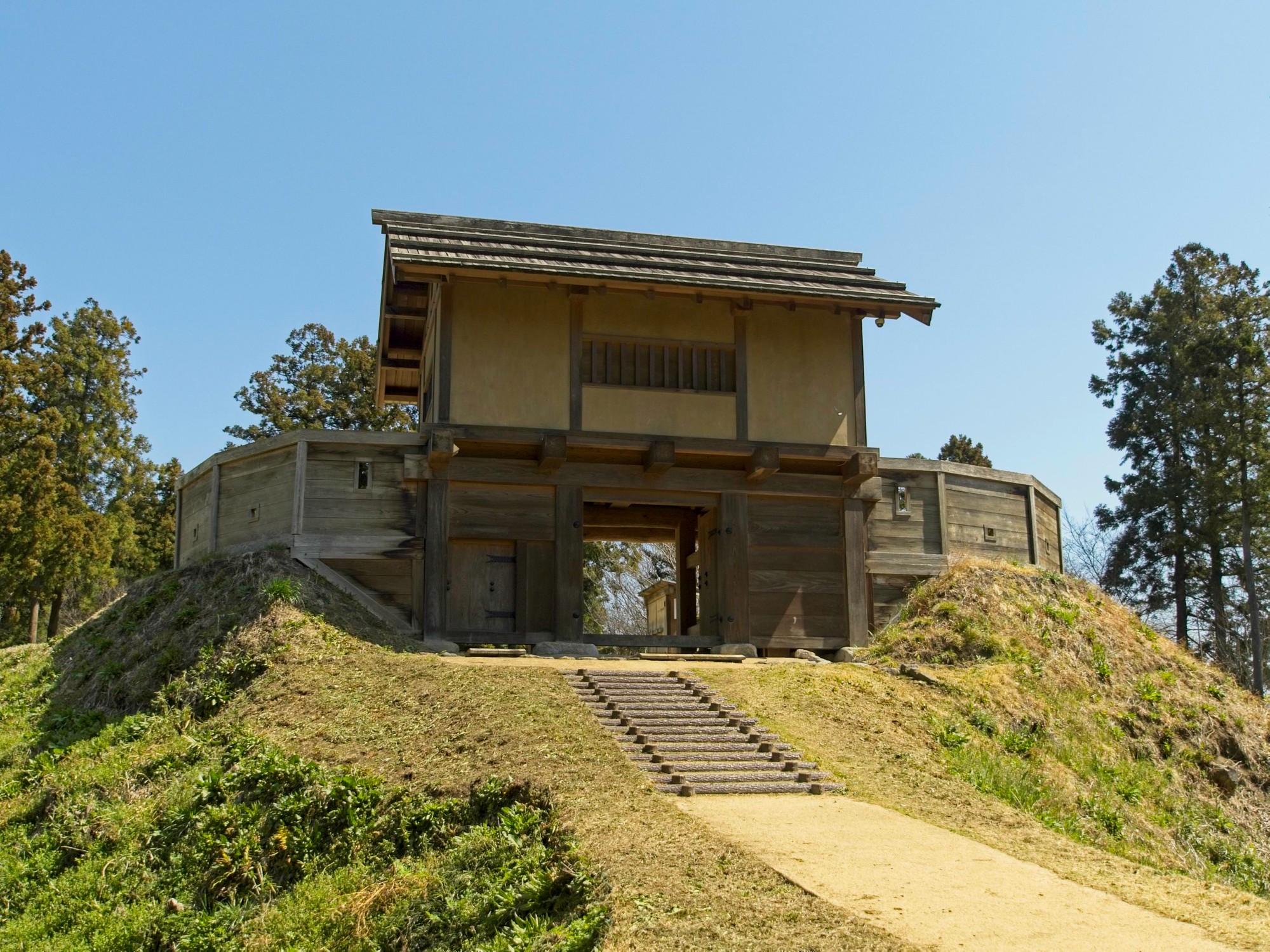Loading map...
{"format":"leaflet","minzoom":false,"maxzoom":false,"limit":500,"offset":0,"link":"all","sort":["order"],"order":[],"headers":"show","mainlabel":"","intro":"","outro":"","searchlabel":"... further results","default":"","import-annotation":false,"width":"auto","height":"350px","centre":false,"title":"","label":"","icon":"Darkred18.png","lines":[],"polygons":[],"circles":[],"rectangles":[],"copycoords":false,"static":false,"zoom":false,"defzoom":14,"layers":["Esri.WorldTopoMap"],"image layers":[],"overlays":[],"resizable":false,"fullscreen":false,"scrollwheelzoom":true,"cluster":false,"clustermaxzoom":20,"clusterzoomonclick":true,"clustermaxradius":80,"clusterspiderfy":true,"geojson":"","clicktarget":"","showtitle":false,"hidenamespace":true,"template":"InfoWindowProfile","userparam":"","activeicon":"","pagelabel":false,"ajaxcoordproperty":"","ajaxquery":"","locations":[{"text":"\u003Cdiv style=\"width:150px\"\u003E\n\u003Cp\u003E\u003Ca href=\"/view/File:Minowa7c.jpg\" class=\"image\"\u003E\u003Cimg alt=\"Minowa7c.jpg\" src=\"../images/thumb/5/57/Minowa7c.jpg/125px-Minowa7c.jpg\" decoding=\"async\" width=\"125\" height=\"94\" srcset=\"../images/thumb/5/57/Minowa7c.jpg/188px-Minowa7c.jpg 1.5x, ../images/thumb/5/57/Minowa7c.jpg/250px-Minowa7c.jpg 2x\" /\u003E\u003C/a\u003E\n\u003C/p\u003E\n\u003C/div\u003E","title":"","link":"","lat":36.40281,"lon":138.9527,"icon":"../images/0/06/Darkred18.png"},{"text":"\u003Cdiv style=\"width:150px\"\u003E\n\u003Cp\u003E\u003Ca href=\"/view/File:Minowa7a.jpg\" class=\"image\"\u003E\u003Cimg alt=\"Minowa7a.jpg\" src=\"../images/thumb/4/40/Minowa7a.jpg/125px-Minowa7a.jpg\" decoding=\"async\" width=\"125\" height=\"94\" srcset=\"../images/thumb/4/40/Minowa7a.jpg/188px-Minowa7a.jpg 1.5x, ../images/thumb/4/40/Minowa7a.jpg/250px-Minowa7a.jpg 2x\" /\u003E\u003C/a\u003E\n\u003C/p\u003E\n\u003C/div\u003E","title":"","link":"","lat":36.4031,"lon":138.95239,"icon":"../images/0/06/Darkred18.png"},{"text":"\u003Cdiv style=\"width:150px\"\u003E\n\u003Cp\u003E\u003Ca href=\"/view/File:Minowa11.jpg\" class=\"image\"\u003E\u003Cimg alt=\"Minowa11.jpg\" src=\"../images/thumb/2/2a/Minowa11.jpg/125px-Minowa11.jpg\" decoding=\"async\" width=\"125\" height=\"94\" srcset=\"../images/thumb/2/2a/Minowa11.jpg/188px-Minowa11.jpg 1.5x, ../images/thumb/2/2a/Minowa11.jpg/250px-Minowa11.jpg 2x\" /\u003E\u003C/a\u003E\n\u003C/p\u003E\n\u003C/div\u003E","title":"","link":"","lat":36.40291,"lon":138.95285,"icon":"../images/0/06/Darkred18.png"},{"text":"\u003Cdiv style=\"width:150px\"\u003E\n\u003Cp\u003E\u003Ca href=\"/view/File:Minowa9.jpg\" class=\"image\"\u003E\u003Cimg alt=\"Minowa9.jpg\" src=\"../images/thumb/6/63/Minowa9.jpg/125px-Minowa9.jpg\" decoding=\"async\" width=\"125\" height=\"94\" srcset=\"../images/thumb/6/63/Minowa9.jpg/188px-Minowa9.jpg 1.5x, ../images/thumb/6/63/Minowa9.jpg/250px-Minowa9.jpg 2x\" /\u003E\u003C/a\u003E\n\u003C/p\u003E\n\u003C/div\u003E","title":"","link":"","lat":36.40281,"lon":138.95295,"icon":"../images/0/06/Darkred18.png"},{"text":"\u003Cdiv style=\"width:150px\"\u003E\n\u003Cp\u003E\u003Ca href=\"/view/File:Minowa14.jpg\" class=\"image\"\u003E\u003Cimg alt=\"Minowa14.jpg\" src=\"../images/thumb/b/b6/Minowa14.jpg/125px-Minowa14.jpg\" decoding=\"async\" width=\"125\" height=\"94\" srcset=\"../images/thumb/b/b6/Minowa14.jpg/188px-Minowa14.jpg 1.5x, ../images/thumb/b/b6/Minowa14.jpg/250px-Minowa14.jpg 2x\" /\u003E\u003C/a\u003E\n\u003C/p\u003E\n\u003C/div\u003E","title":"","link":"","lat":36.40279,"lon":138.95274,"icon":"../images/0/06/Darkred18.png"},{"text":"\u003Cdiv style=\"width:150px\"\u003E\n\u003Cp\u003E\u003Ca href=\"/view/File:Minowa8.jpg\" class=\"image\"\u003E\u003Cimg alt=\"Minowa8.jpg\" src=\"../images/thumb/1/11/Minowa8.jpg/125px-Minowa8.jpg\" decoding=\"async\" width=\"125\" height=\"94\" srcset=\"../images/thumb/1/11/Minowa8.jpg/188px-Minowa8.jpg 1.5x, ../images/thumb/1/11/Minowa8.jpg/250px-Minowa8.jpg 2x\" /\u003E\u003C/a\u003E\n\u003C/p\u003E\n\u003C/div\u003E","title":"","link":"","lat":36.40255,"lon":138.95284,"icon":"../images/0/06/Darkred18.png"},{"text":"\u003Cdiv style=\"width:150px\"\u003E\n\u003Cp\u003E\u003Ca href=\"/view/File:Minowa13.jpg\" class=\"image\"\u003E\u003Cimg alt=\"Minowa13.jpg\" src=\"../images/thumb/6/6b/Minowa13.jpg/125px-Minowa13.jpg\" decoding=\"async\" width=\"125\" height=\"94\" srcset=\"../images/thumb/6/6b/Minowa13.jpg/188px-Minowa13.jpg 1.5x, ../images/thumb/6/6b/Minowa13.jpg/250px-Minowa13.jpg 2x\" /\u003E\u003C/a\u003E\n\u003C/p\u003E\n\u003C/div\u003E","title":"","link":"","lat":36.40281,"lon":138.95277,"icon":"../images/0/06/Darkred18.png"},{"text":"\u003Cdiv style=\"width:150px\"\u003E\n\u003Cp\u003E\u003Ca href=\"/view/File:Minowa7b.jpg\" class=\"image\"\u003E\u003Cimg alt=\"Minowa7b.jpg\" src=\"../images/thumb/5/58/Minowa7b.jpg/125px-Minowa7b.jpg\" decoding=\"async\" width=\"125\" height=\"94\" srcset=\"../images/thumb/5/58/Minowa7b.jpg/188px-Minowa7b.jpg 1.5x, ../images/thumb/5/58/Minowa7b.jpg/250px-Minowa7b.jpg 2x\" /\u003E\u003C/a\u003E\n\u003C/p\u003E\n\u003C/div\u003E","title":"","link":"","lat":36.40321,"lon":138.95279,"icon":"../images/0/06/Darkred18.png"},{"text":"\u003Cdiv style=\"width:150px\"\u003E\n\u003Cp\u003E\u003Ca href=\"/view/File:Minowa7d.jpg\" class=\"image\"\u003E\u003Cimg alt=\"Minowa7d.jpg\" src=\"../images/thumb/7/7d/Minowa7d.jpg/125px-Minowa7d.jpg\" decoding=\"async\" width=\"125\" height=\"94\" srcset=\"../images/thumb/7/7d/Minowa7d.jpg/188px-Minowa7d.jpg 1.5x, ../images/thumb/7/7d/Minowa7d.jpg/250px-Minowa7d.jpg 2x\" /\u003E\u003C/a\u003E\n\u003C/p\u003E\n\u003C/div\u003E","title":"","link":"","lat":36.40242,"lon":138.95303,"icon":"../images/0/06/Darkred18.png"},{"text":"\u003Cdiv style=\"width:150px\"\u003E\n\u003Cp\u003E\u003Ca href=\"/view/File:Minowa12.jpg\" class=\"image\"\u003E\u003Cimg alt=\"Minowa12.jpg\" src=\"../images/thumb/8/8a/Minowa12.jpg/125px-Minowa12.jpg\" decoding=\"async\" width=\"125\" height=\"94\" srcset=\"../images/thumb/8/8a/Minowa12.jpg/188px-Minowa12.jpg 1.5x, ../images/thumb/8/8a/Minowa12.jpg/250px-Minowa12.jpg 2x\" /\u003E\u003C/a\u003E\n\u003C/p\u003E\n\u003C/div\u003E","title":"","link":"","lat":36.40282,"lon":138.95279,"icon":"../images/0/06/Darkred18.png"},{"text":"\u003Cdiv style=\"width:150px\"\u003E\n\u003Cp\u003E\u003Ca href=\"/view/File:Minowa16.jpg\" class=\"image\"\u003E\u003Cimg alt=\"Minowa16.jpg\" src=\"../images/thumb/0/09/Minowa16.jpg/125px-Minowa16.jpg\" decoding=\"async\" width=\"125\" height=\"94\" srcset=\"../images/thumb/0/09/Minowa16.jpg/188px-Minowa16.jpg 1.5x, ../images/thumb/0/09/Minowa16.jpg/250px-Minowa16.jpg 2x\" /\u003E\u003C/a\u003E\n\u003C/p\u003E\n\u003C/div\u003E","title":"","link":"","lat":36.40308,"lon":138.95299,"icon":"../images/0/06/Darkred18.png"},{"text":"\u003Cdiv style=\"width:150px\"\u003E\n\u003Cp\u003E\u003Ca href=\"/view/File:Minowa10.jpg\" class=\"image\"\u003E\u003Cimg alt=\"Minowa10.jpg\" src=\"../images/thumb/a/af/Minowa10.jpg/125px-Minowa10.jpg\" decoding=\"async\" width=\"125\" height=\"94\" srcset=\"../images/thumb/a/af/Minowa10.jpg/188px-Minowa10.jpg 1.5x, ../images/thumb/a/af/Minowa10.jpg/250px-Minowa10.jpg 2x\" /\u003E\u003C/a\u003E\n\u003C/p\u003E\n\u003C/div\u003E","title":"","link":"","lat":36.4028,"lon":138.95292,"icon":"../images/0/06/Darkred18.png"},{"text":"\u003Cdiv style=\"width:150px\"\u003E\n\u003Cp\u003E\u003Ca href=\"/view/File:Minowa28.jpg\" class=\"image\"\u003E\u003Cimg alt=\"Minowa28.jpg\" src=\"../images/thumb/f/f0/Minowa28.jpg/125px-Minowa28.jpg\" decoding=\"async\" width=\"125\" height=\"94\" srcset=\"../images/thumb/f/f0/Minowa28.jpg/188px-Minowa28.jpg 1.5x, ../images/thumb/f/f0/Minowa28.jpg/250px-Minowa28.jpg 2x\" /\u003E\u003C/a\u003E\n\u003C/p\u003E\n\u003C/div\u003E","title":"","link":"","lat":36.40395,"lon":138.95175,"icon":"../images/0/06/Darkred18.png"},{"text":"\u003Cdiv style=\"width:150px\"\u003E\n\u003Cp\u003E\u003Ca href=\"/view/File:Minowa27.jpg\" class=\"image\"\u003E\u003Cimg alt=\"Minowa27.jpg\" src=\"../images/thumb/9/94/Minowa27.jpg/125px-Minowa27.jpg\" decoding=\"async\" width=\"125\" height=\"94\" srcset=\"../images/thumb/9/94/Minowa27.jpg/188px-Minowa27.jpg 1.5x, ../images/thumb/9/94/Minowa27.jpg/250px-Minowa27.jpg 2x\" /\u003E\u003C/a\u003E\n\u003C/p\u003E\n\u003C/div\u003E","title":"","link":"","lat":36.40394,"lon":138.95174,"icon":"../images/0/06/Darkred18.png"},{"text":"\u003Cdiv style=\"width:150px\"\u003E\n\u003Cp\u003E\u003Ca href=\"/view/File:Minowa38.jpg\" class=\"image\"\u003E\u003Cimg alt=\"Minowa38.jpg\" src=\"../images/thumb/1/17/Minowa38.jpg/125px-Minowa38.jpg\" decoding=\"async\" width=\"125\" height=\"94\" srcset=\"../images/thumb/1/17/Minowa38.jpg/188px-Minowa38.jpg 1.5x, ../images/thumb/1/17/Minowa38.jpg/250px-Minowa38.jpg 2x\" /\u003E\u003C/a\u003E\n\u003C/p\u003E\n\u003C/div\u003E","title":"","link":"","lat":36.40374,"lon":138.95136,"icon":"../images/0/06/Darkred18.png"},{"text":"\u003Cdiv style=\"width:150px\"\u003E\n\u003Cp\u003E\u003Ca href=\"/view/File:Minowa31.jpg\" class=\"image\"\u003E\u003Cimg alt=\"Minowa31.jpg\" src=\"../images/thumb/1/1f/Minowa31.jpg/125px-Minowa31.jpg\" decoding=\"async\" width=\"125\" height=\"94\" srcset=\"../images/thumb/1/1f/Minowa31.jpg/188px-Minowa31.jpg 1.5x, ../images/thumb/1/1f/Minowa31.jpg/250px-Minowa31.jpg 2x\" /\u003E\u003C/a\u003E\n\u003C/p\u003E\n\u003C/div\u003E","title":"","link":"","lat":36.40386,"lon":138.95118,"icon":"../images/0/06/Darkred18.png"},{"text":"\u003Cdiv style=\"width:150px\"\u003E\n\u003Cp\u003E\u003Ca href=\"/view/File:Minowa29.jpg\" class=\"image\"\u003E\u003Cimg alt=\"Minowa29.jpg\" src=\"../images/thumb/7/7a/Minowa29.jpg/125px-Minowa29.jpg\" decoding=\"async\" width=\"125\" height=\"94\" srcset=\"../images/thumb/7/7a/Minowa29.jpg/188px-Minowa29.jpg 1.5x, ../images/thumb/7/7a/Minowa29.jpg/250px-Minowa29.jpg 2x\" /\u003E\u003C/a\u003E\n\u003C/p\u003E\n\u003C/div\u003E","title":"","link":"","lat":36.40398,"lon":138.95144,"icon":"../images/0/06/Darkred18.png"},{"text":"\u003Cdiv style=\"width:150px\"\u003E\n\u003Cp\u003E\u003Ca href=\"/view/File:Minowa30.jpg\" class=\"image\"\u003E\u003Cimg alt=\"Minowa30.jpg\" src=\"../images/thumb/4/48/Minowa30.jpg/125px-Minowa30.jpg\" decoding=\"async\" width=\"125\" height=\"94\" srcset=\"../images/thumb/4/48/Minowa30.jpg/188px-Minowa30.jpg 1.5x, ../images/thumb/4/48/Minowa30.jpg/250px-Minowa30.jpg 2x\" /\u003E\u003C/a\u003E\n\u003C/p\u003E\n\u003C/div\u003E","title":"","link":"","lat":36.40379,"lon":138.9513,"icon":"../images/0/06/Darkred18.png"},{"text":"\u003Cdiv style=\"width:150px\"\u003E\n\u003Cp\u003E\u003Ca href=\"/view/File:Minowa1.jpg\" class=\"image\"\u003E\u003Cimg alt=\"Minowa1.jpg\" src=\"../images/thumb/e/e6/Minowa1.jpg/125px-Minowa1.jpg\" decoding=\"async\" width=\"125\" height=\"94\" srcset=\"../images/thumb/e/e6/Minowa1.jpg/188px-Minowa1.jpg 1.5x, ../images/thumb/e/e6/Minowa1.jpg/250px-Minowa1.jpg 2x\" /\u003E\u003C/a\u003E\n\u003C/p\u003E\n\u003C/div\u003E","title":"","link":"","lat":36.40074,"lon":138.95292,"icon":"../images/0/06/Darkred18.png"},{"text":"\u003Cdiv style=\"width:150px\"\u003E\n\u003Cp\u003E\u003Ca href=\"/view/File:Minowa3.jpg\" class=\"image\"\u003E\u003Cimg alt=\"Minowa3.jpg\" src=\"../images/thumb/8/8d/Minowa3.jpg/125px-Minowa3.jpg\" decoding=\"async\" width=\"125\" height=\"94\" srcset=\"../images/thumb/8/8d/Minowa3.jpg/188px-Minowa3.jpg 1.5x, ../images/thumb/8/8d/Minowa3.jpg/250px-Minowa3.jpg 2x\" /\u003E\u003C/a\u003E\n\u003C/p\u003E\n\u003C/div\u003E","title":"","link":"","lat":36.4015,"lon":138.95261,"icon":"../images/0/06/Darkred18.png"},{"text":"\u003Cdiv style=\"width:150px\"\u003E\n\u003Cp\u003E\u003Ca href=\"/view/File:Minowa2.jpg\" class=\"image\"\u003E\u003Cimg alt=\"Minowa2.jpg\" src=\"../images/thumb/3/34/Minowa2.jpg/125px-Minowa2.jpg\" decoding=\"async\" width=\"125\" height=\"94\" srcset=\"../images/thumb/3/34/Minowa2.jpg/188px-Minowa2.jpg 1.5x, ../images/thumb/3/34/Minowa2.jpg/250px-Minowa2.jpg 2x\" /\u003E\u003C/a\u003E\n\u003C/p\u003E\n\u003C/div\u003E","title":"","link":"","lat":36.40099,"lon":138.95288,"icon":"../images/0/06/Darkred18.png"},{"text":"\u003Cdiv style=\"width:150px\"\u003E\n\u003Cp\u003E\u003Ca href=\"/view/File:Minowa4.jpg\" class=\"image\"\u003E\u003Cimg alt=\"Minowa4.jpg\" src=\"../images/thumb/a/a0/Minowa4.jpg/125px-Minowa4.jpg\" decoding=\"async\" width=\"125\" height=\"94\" srcset=\"../images/thumb/a/a0/Minowa4.jpg/188px-Minowa4.jpg 1.5x, ../images/thumb/a/a0/Minowa4.jpg/250px-Minowa4.jpg 2x\" /\u003E\u003C/a\u003E\n\u003C/p\u003E\n\u003C/div\u003E","title":"","link":"","lat":36.40212,"lon":138.95308,"icon":"../images/0/06/Darkred18.png"},{"text":"\u003Cdiv style=\"width:150px\"\u003E\n\u003Cp\u003E\u003Ca href=\"/view/File:Minowa5.jpg\" class=\"image\"\u003E\u003Cimg alt=\"Minowa5.jpg\" src=\"../images/thumb/4/47/Minowa5.jpg/125px-Minowa5.jpg\" decoding=\"async\" width=\"125\" height=\"94\" srcset=\"../images/thumb/4/47/Minowa5.jpg/188px-Minowa5.jpg 1.5x, ../images/thumb/4/47/Minowa5.jpg/250px-Minowa5.jpg 2x\" /\u003E\u003C/a\u003E\n\u003C/p\u003E\n\u003C/div\u003E","title":"","link":"","lat":36.40225,"lon":138.95318,"icon":"../images/0/06/Darkred18.png"},{"text":"\u003Cdiv style=\"width:150px\"\u003E\n\u003Cp\u003E\u003Ca href=\"/view/File:Minowa6.jpg\" class=\"image\"\u003E\u003Cimg alt=\"Minowa6.jpg\" src=\"../images/thumb/d/db/Minowa6.jpg/125px-Minowa6.jpg\" decoding=\"async\" width=\"125\" height=\"94\" srcset=\"../images/thumb/d/db/Minowa6.jpg/188px-Minowa6.jpg 1.5x, ../images/thumb/d/db/Minowa6.jpg/250px-Minowa6.jpg 2x\" /\u003E\u003C/a\u003E\n\u003C/p\u003E\n\u003C/div\u003E","title":"","link":"","lat":36.40256,"lon":138.95311,"icon":"../images/0/06/Darkred18.png"},{"text":"\u003Cdiv style=\"width:150px\"\u003E\n\u003Cp\u003E\u003Ca href=\"/view/File:Minowa7e.jpg\" class=\"image\"\u003E\u003Cimg alt=\"Minowa7e.jpg\" src=\"../images/thumb/2/26/Minowa7e.jpg/125px-Minowa7e.jpg\" decoding=\"async\" width=\"125\" height=\"94\" srcset=\"../images/thumb/2/26/Minowa7e.jpg/188px-Minowa7e.jpg 1.5x, ../images/thumb/2/26/Minowa7e.jpg/250px-Minowa7e.jpg 2x\" /\u003E\u003C/a\u003E\n\u003C/p\u003E\n\u003C/div\u003E","title":"","link":"","lat":36.40262,"lon":138.95262,"icon":"../images/0/06/Darkred18.png"},{"text":"\u003Cdiv style=\"width:150px\"\u003E\n\u003Cp\u003E\u003Ca href=\"/view/File:Minowa15.jpg\" class=\"image\"\u003E\u003Cimg alt=\"Minowa15.jpg\" src=\"../images/thumb/3/35/Minowa15.jpg/125px-Minowa15.jpg\" decoding=\"async\" width=\"125\" height=\"94\" srcset=\"../images/thumb/3/35/Minowa15.jpg/188px-Minowa15.jpg 1.5x, ../images/thumb/3/35/Minowa15.jpg/250px-Minowa15.jpg 2x\" /\u003E\u003C/a\u003E\n\u003C/p\u003E\n\u003C/div\u003E","title":"","link":"","lat":36.4029,"lon":138.9529,"icon":"../images/0/06/Darkred18.png"},{"text":"\u003Cdiv style=\"width:150px\"\u003E\n\u003Cp\u003E\u003Ca href=\"/view/File:Minowa17.jpg\" class=\"image\"\u003E\u003Cimg alt=\"Minowa17.jpg\" src=\"../images/thumb/0/0f/Minowa17.jpg/125px-Minowa17.jpg\" decoding=\"async\" width=\"125\" height=\"94\" srcset=\"../images/thumb/0/0f/Minowa17.jpg/188px-Minowa17.jpg 1.5x, ../images/thumb/0/0f/Minowa17.jpg/250px-Minowa17.jpg 2x\" /\u003E\u003C/a\u003E\n\u003C/p\u003E\n\u003C/div\u003E","title":"","link":"","lat":36.40318,"lon":138.95281,"icon":"../images/0/06/Darkred18.png"},{"text":"\u003Cdiv style=\"width:150px\"\u003E\n\u003Cp\u003E\u003Ca href=\"/view/File:Minowa20.jpg\" class=\"image\"\u003E\u003Cimg alt=\"Minowa20.jpg\" src=\"../images/thumb/b/bc/Minowa20.jpg/125px-Minowa20.jpg\" decoding=\"async\" width=\"125\" height=\"94\" srcset=\"../images/thumb/b/bc/Minowa20.jpg/188px-Minowa20.jpg 1.5x, ../images/thumb/b/bc/Minowa20.jpg/250px-Minowa20.jpg 2x\" /\u003E\u003C/a\u003E\n\u003C/p\u003E\n\u003C/div\u003E","title":"","link":"","lat":36.4038,"lon":138.95272,"icon":"../images/0/06/Darkred18.png"},{"text":"\u003Cdiv style=\"width:150px\"\u003E\n\u003Cp\u003E\u003Ca href=\"/view/File:Minowa22.jpg\" class=\"image\"\u003E\u003Cimg alt=\"Minowa22.jpg\" src=\"../images/thumb/f/f2/Minowa22.jpg/125px-Minowa22.jpg\" decoding=\"async\" width=\"125\" height=\"94\" srcset=\"../images/thumb/f/f2/Minowa22.jpg/188px-Minowa22.jpg 1.5x, ../images/thumb/f/f2/Minowa22.jpg/250px-Minowa22.jpg 2x\" /\u003E\u003C/a\u003E\n\u003C/p\u003E\n\u003C/div\u003E","title":"","link":"","lat":36.40415,"lon":138.95227,"icon":"../images/0/06/Darkred18.png"},{"text":"\u003Cdiv style=\"width:150px\"\u003E\n\u003Cp\u003E\u003Ca href=\"/view/File:Minowa23.jpg\" class=\"image\"\u003E\u003Cimg alt=\"Minowa23.jpg\" src=\"../images/thumb/9/93/Minowa23.jpg/125px-Minowa23.jpg\" decoding=\"async\" width=\"125\" height=\"94\" srcset=\"../images/thumb/9/93/Minowa23.jpg/188px-Minowa23.jpg 1.5x, ../images/thumb/9/93/Minowa23.jpg/250px-Minowa23.jpg 2x\" /\u003E\u003C/a\u003E\n\u003C/p\u003E\n\u003C/div\u003E","title":"","link":"","lat":36.40422,"lon":138.95201,"icon":"../images/0/06/Darkred18.png"},{"text":"\u003Cdiv style=\"width:150px\"\u003E\n\u003Cp\u003E\u003Ca href=\"/view/File:Minowa24.jpg\" class=\"image\"\u003E\u003Cimg alt=\"Minowa24.jpg\" src=\"../images/thumb/3/39/Minowa24.jpg/125px-Minowa24.jpg\" decoding=\"async\" width=\"125\" height=\"94\" srcset=\"../images/thumb/3/39/Minowa24.jpg/188px-Minowa24.jpg 1.5x, ../images/thumb/3/39/Minowa24.jpg/250px-Minowa24.jpg 2x\" /\u003E\u003C/a\u003E\n\u003C/p\u003E\n\u003C/div\u003E","title":"","link":"","lat":36.40414,"lon":138.95197,"icon":"../images/0/06/Darkred18.png"},{"text":"\u003Cdiv style=\"width:150px\"\u003E\n\u003Cp\u003E\u003Ca href=\"/view/File:Minowa26.jpg\" class=\"image\"\u003E\u003Cimg alt=\"Minowa26.jpg\" src=\"../images/thumb/0/0c/Minowa26.jpg/125px-Minowa26.jpg\" decoding=\"async\" width=\"125\" height=\"94\" srcset=\"../images/thumb/0/0c/Minowa26.jpg/188px-Minowa26.jpg 1.5x, ../images/thumb/0/0c/Minowa26.jpg/250px-Minowa26.jpg 2x\" /\u003E\u003C/a\u003E\n\u003C/p\u003E\n\u003C/div\u003E","title":"","link":"","lat":36.40396,"lon":138.95188,"icon":"../images/0/06/Darkred18.png"},{"text":"\u003Cdiv style=\"width:150px\"\u003E\n\u003Cp\u003E\u003Ca href=\"/view/File:Minowa32.jpg\" class=\"image\"\u003E\u003Cimg alt=\"Minowa32.jpg\" src=\"../images/thumb/2/21/Minowa32.jpg/125px-Minowa32.jpg\" decoding=\"async\" width=\"125\" height=\"94\" srcset=\"../images/thumb/2/21/Minowa32.jpg/188px-Minowa32.jpg 1.5x, ../images/thumb/2/21/Minowa32.jpg/250px-Minowa32.jpg 2x\" /\u003E\u003C/a\u003E\n\u003C/p\u003E\n\u003C/div\u003E","title":"","link":"","lat":36.40452,"lon":138.95111,"icon":"../images/0/06/Darkred18.png"},{"text":"\u003Cdiv style=\"width:150px\"\u003E\n\u003Cp\u003E\u003Ca href=\"/view/File:Minowa33.jpg\" class=\"image\"\u003E\u003Cimg alt=\"Minowa33.jpg\" src=\"../images/thumb/7/74/Minowa33.jpg/125px-Minowa33.jpg\" decoding=\"async\" width=\"125\" height=\"94\" srcset=\"../images/thumb/7/74/Minowa33.jpg/188px-Minowa33.jpg 1.5x, ../images/thumb/7/74/Minowa33.jpg/250px-Minowa33.jpg 2x\" /\u003E\u003C/a\u003E\n\u003C/p\u003E\n\u003C/div\u003E","title":"","link":"","lat":36.40492,"lon":138.95128,"icon":"../images/0/06/Darkred18.png"},{"text":"\u003Cdiv style=\"width:150px\"\u003E\n\u003Cp\u003E\u003Ca href=\"/view/File:Minowa34.jpg\" class=\"image\"\u003E\u003Cimg alt=\"Minowa34.jpg\" src=\"../images/thumb/b/b3/Minowa34.jpg/125px-Minowa34.jpg\" decoding=\"async\" width=\"125\" height=\"94\" srcset=\"../images/thumb/b/b3/Minowa34.jpg/188px-Minowa34.jpg 1.5x, ../images/thumb/b/b3/Minowa34.jpg/250px-Minowa34.jpg 2x\" /\u003E\u003C/a\u003E\n\u003C/p\u003E\n\u003C/div\u003E","title":"","link":"","lat":36.40492,"lon":138.95127,"icon":"../images/0/06/Darkred18.png"},{"text":"\u003Cdiv style=\"width:150px\"\u003E\n\u003Cp\u003E\u003Ca href=\"/view/File:Minowa35.jpg\" class=\"image\"\u003E\u003Cimg alt=\"Minowa35.jpg\" src=\"../images/thumb/d/d7/Minowa35.jpg/125px-Minowa35.jpg\" decoding=\"async\" width=\"125\" height=\"94\" srcset=\"../images/thumb/d/d7/Minowa35.jpg/188px-Minowa35.jpg 1.5x, ../images/thumb/d/d7/Minowa35.jpg/250px-Minowa35.jpg 2x\" /\u003E\u003C/a\u003E\n\u003C/p\u003E\n\u003C/div\u003E","title":"","link":"","lat":36.40572,"lon":138.95067,"icon":"../images/0/06/Darkred18.png"},{"text":"\u003Cdiv style=\"width:150px\"\u003E\n\u003Cp\u003E\u003Ca href=\"/view/File:Minowa36.jpg\" class=\"image\"\u003E\u003Cimg alt=\"Minowa36.jpg\" src=\"../images/thumb/7/72/Minowa36.jpg/125px-Minowa36.jpg\" decoding=\"async\" width=\"125\" height=\"94\" srcset=\"../images/thumb/7/72/Minowa36.jpg/188px-Minowa36.jpg 1.5x, ../images/thumb/7/72/Minowa36.jpg/250px-Minowa36.jpg 2x\" /\u003E\u003C/a\u003E\n\u003C/p\u003E\n\u003C/div\u003E","title":"","link":"","lat":36.40426,"lon":138.95057,"icon":"../images/0/06/Darkred18.png"},{"text":"\u003Cdiv style=\"width:150px\"\u003E\n\u003Cp\u003E\u003Ca href=\"/view/File:Minowa37.jpg\" class=\"image\"\u003E\u003Cimg alt=\"Minowa37.jpg\" src=\"../images/thumb/6/6d/Minowa37.jpg/125px-Minowa37.jpg\" decoding=\"async\" width=\"125\" height=\"94\" srcset=\"../images/thumb/6/6d/Minowa37.jpg/188px-Minowa37.jpg 1.5x, ../images/thumb/6/6d/Minowa37.jpg/250px-Minowa37.jpg 2x\" /\u003E\u003C/a\u003E\n\u003C/p\u003E\n\u003C/div\u003E","title":"","link":"","lat":36.40378,"lon":138.95131,"icon":"../images/0/06/Darkred18.png"},{"text":"\u003Cdiv style=\"width:150px\"\u003E\n\u003Cp\u003E\u003Ca href=\"/view/File:Minowa39.jpg\" class=\"image\"\u003E\u003Cimg alt=\"Minowa39.jpg\" src=\"../images/thumb/2/22/Minowa39.jpg/125px-Minowa39.jpg\" decoding=\"async\" width=\"125\" height=\"94\" srcset=\"../images/thumb/2/22/Minowa39.jpg/188px-Minowa39.jpg 1.5x, ../images/thumb/2/22/Minowa39.jpg/250px-Minowa39.jpg 2x\" /\u003E\u003C/a\u003E\n\u003C/p\u003E\n\u003C/div\u003E","title":"","link":"","lat":36.40336,"lon":138.95164,"icon":"../images/0/06/Darkred18.png"},{"text":"\u003Cdiv style=\"width:150px\"\u003E\n\u003Cp\u003E\u003Ca href=\"/view/File:Minowa40.jpg\" class=\"image\"\u003E\u003Cimg alt=\"Minowa40.jpg\" src=\"../images/thumb/a/ab/Minowa40.jpg/125px-Minowa40.jpg\" decoding=\"async\" width=\"125\" height=\"94\" srcset=\"../images/thumb/a/ab/Minowa40.jpg/188px-Minowa40.jpg 1.5x, ../images/thumb/a/ab/Minowa40.jpg/250px-Minowa40.jpg 2x\" /\u003E\u003C/a\u003E\n\u003C/p\u003E\n\u003C/div\u003E","title":"","link":"","lat":36.40317,"lon":138.95203,"icon":"../images/0/06/Darkred18.png"},{"text":"\u003Cdiv style=\"width:150px\"\u003E\n\u003Cp\u003E\u003Ca href=\"/view/File:Minowa41.jpg\" class=\"image\"\u003E\u003Cimg alt=\"Minowa41.jpg\" src=\"../images/thumb/3/3c/Minowa41.jpg/125px-Minowa41.jpg\" decoding=\"async\" width=\"125\" height=\"94\" srcset=\"../images/thumb/3/3c/Minowa41.jpg/188px-Minowa41.jpg 1.5x, ../images/thumb/3/3c/Minowa41.jpg/250px-Minowa41.jpg 2x\" /\u003E\u003C/a\u003E\n\u003C/p\u003E\n\u003C/div\u003E","title":"","link":"","lat":36.40304,"lon":138.95234,"icon":"../images/0/06/Darkred18.png"},{"text":"\u003Cdiv style=\"width:150px\"\u003E\n\u003Cp\u003E\u003Ca href=\"/view/File:Minowa43.jpg\" class=\"image\"\u003E\u003Cimg alt=\"Minowa43.jpg\" src=\"../images/thumb/a/a1/Minowa43.jpg/125px-Minowa43.jpg\" decoding=\"async\" width=\"125\" height=\"94\" srcset=\"../images/thumb/a/a1/Minowa43.jpg/188px-Minowa43.jpg 1.5x, ../images/thumb/a/a1/Minowa43.jpg/250px-Minowa43.jpg 2x\" /\u003E\u003C/a\u003E\n\u003C/p\u003E\n\u003C/div\u003E","title":"","link":"","lat":36.403,"lon":138.95184,"icon":"../images/0/06/Darkred18.png"},{"text":"\u003Cdiv style=\"width:150px\"\u003E\n\u003Cp\u003E\u003Ca href=\"/view/File:Minowa44.jpg\" class=\"image\"\u003E\u003Cimg alt=\"Minowa44.jpg\" src=\"../images/thumb/5/55/Minowa44.jpg/125px-Minowa44.jpg\" decoding=\"async\" width=\"125\" height=\"94\" srcset=\"../images/thumb/5/55/Minowa44.jpg/188px-Minowa44.jpg 1.5x, ../images/thumb/5/55/Minowa44.jpg/250px-Minowa44.jpg 2x\" /\u003E\u003C/a\u003E\n\u003C/p\u003E\n\u003C/div\u003E","title":"","link":"","lat":36.40294,"lon":138.95169,"icon":"../images/0/06/Darkred18.png"},{"text":"\u003Cdiv style=\"width:150px\"\u003E\n\u003Cp\u003E\u003Ca href=\"/view/File:Minowa45.jpg\" class=\"image\"\u003E\u003Cimg alt=\"Minowa45.jpg\" src=\"../images/thumb/b/b2/Minowa45.jpg/125px-Minowa45.jpg\" decoding=\"async\" width=\"125\" height=\"94\" srcset=\"../images/thumb/b/b2/Minowa45.jpg/188px-Minowa45.jpg 1.5x, ../images/thumb/b/b2/Minowa45.jpg/250px-Minowa45.jpg 2x\" /\u003E\u003C/a\u003E\n\u003C/p\u003E\n\u003C/div\u003E","title":"","link":"","lat":36.4028,"lon":138.95168,"icon":"../images/0/06/Darkred18.png"},{"text":"\u003Cdiv style=\"width:150px\"\u003E\n\u003Cp\u003E\u003Ca href=\"/view/File:Minowa46.jpg\" class=\"image\"\u003E\u003Cimg alt=\"Minowa46.jpg\" src=\"../images/thumb/1/12/Minowa46.jpg/125px-Minowa46.jpg\" decoding=\"async\" width=\"125\" height=\"94\" srcset=\"../images/thumb/1/12/Minowa46.jpg/188px-Minowa46.jpg 1.5x, ../images/thumb/1/12/Minowa46.jpg/250px-Minowa46.jpg 2x\" /\u003E\u003C/a\u003E\n\u003C/p\u003E\n\u003C/div\u003E","title":"","link":"","lat":36.40274,"lon":138.95181,"icon":"../images/0/06/Darkred18.png"},{"text":"\u003Cdiv style=\"width:150px\"\u003E\n\u003Cp\u003E\u003Ca href=\"/view/File:Minowa47.jpg\" class=\"image\"\u003E\u003Cimg alt=\"Minowa47.jpg\" src=\"../images/thumb/7/77/Minowa47.jpg/125px-Minowa47.jpg\" decoding=\"async\" width=\"125\" height=\"94\" srcset=\"../images/thumb/7/77/Minowa47.jpg/188px-Minowa47.jpg 1.5x, ../images/thumb/7/77/Minowa47.jpg/250px-Minowa47.jpg 2x\" /\u003E\u003C/a\u003E\n\u003C/p\u003E\n\u003C/div\u003E","title":"","link":"","lat":36.40273,"lon":138.95122,"icon":"../images/0/06/Darkred18.png"},{"text":"\u003Cdiv style=\"width:150px\"\u003E\n\u003Cp\u003E\u003Ca href=\"/view/File:Minowa48.jpg\" class=\"image\"\u003E\u003Cimg alt=\"Minowa48.jpg\" src=\"../images/thumb/7/7c/Minowa48.jpg/125px-Minowa48.jpg\" decoding=\"async\" width=\"125\" height=\"94\" srcset=\"../images/thumb/7/7c/Minowa48.jpg/188px-Minowa48.jpg 1.5x, ../images/thumb/7/7c/Minowa48.jpg/250px-Minowa48.jpg 2x\" /\u003E\u003C/a\u003E\n\u003C/p\u003E\n\u003C/div\u003E","title":"","link":"","lat":36.40274,"lon":138.95088,"icon":"../images/0/06/Darkred18.png"},{"text":"\u003Cdiv style=\"width:150px\"\u003E\n\u003Cp\u003E\u003Ca href=\"/view/File:Minowa49.jpg\" class=\"image\"\u003E\u003Cimg alt=\"Minowa49.jpg\" src=\"../images/thumb/9/94/Minowa49.jpg/125px-Minowa49.jpg\" decoding=\"async\" width=\"125\" height=\"94\" srcset=\"../images/thumb/9/94/Minowa49.jpg/188px-Minowa49.jpg 1.5x, ../images/thumb/9/94/Minowa49.jpg/250px-Minowa49.jpg 2x\" /\u003E\u003C/a\u003E\n\u003C/p\u003E\n\u003C/div\u003E","title":"","link":"","lat":36.40274,"lon":138.95078,"icon":"../images/0/06/Darkred18.png"},{"text":"\u003Cdiv style=\"width:150px\"\u003E\n\u003Cp\u003E\u003Ca href=\"/view/File:Minowa50.jpg\" class=\"image\"\u003E\u003Cimg alt=\"Minowa50.jpg\" src=\"../images/thumb/4/49/Minowa50.jpg/125px-Minowa50.jpg\" decoding=\"async\" width=\"125\" height=\"94\" srcset=\"../images/thumb/4/49/Minowa50.jpg/188px-Minowa50.jpg 1.5x, ../images/thumb/4/49/Minowa50.jpg/250px-Minowa50.jpg 2x\" /\u003E\u003C/a\u003E\n\u003C/p\u003E\n\u003C/div\u003E","title":"","link":"","lat":36.40272,"lon":138.95176,"icon":"../images/0/06/Darkred18.png"},{"text":"\u003Cdiv style=\"width:150px\"\u003E\n\u003Cp\u003E\u003Ca href=\"/view/File:Minowa51.jpg\" class=\"image\"\u003E\u003Cimg alt=\"Minowa51.jpg\" src=\"../images/thumb/5/58/Minowa51.jpg/125px-Minowa51.jpg\" decoding=\"async\" width=\"125\" height=\"94\" srcset=\"../images/thumb/5/58/Minowa51.jpg/188px-Minowa51.jpg 1.5x, ../images/thumb/5/58/Minowa51.jpg/250px-Minowa51.jpg 2x\" /\u003E\u003C/a\u003E\n\u003C/p\u003E\n\u003C/div\u003E","title":"","link":"","lat":36.40274,"lon":138.95177,"icon":"../images/0/06/Darkred18.png"},{"text":"\u003Cdiv style=\"width:150px\"\u003E\n\u003Cp\u003E\u003Ca href=\"/view/File:Minowa52.jpg\" class=\"image\"\u003E\u003Cimg alt=\"Minowa52.jpg\" src=\"../images/thumb/2/24/Minowa52.jpg/125px-Minowa52.jpg\" decoding=\"async\" width=\"125\" height=\"94\" srcset=\"../images/thumb/2/24/Minowa52.jpg/188px-Minowa52.jpg 1.5x, ../images/thumb/2/24/Minowa52.jpg/250px-Minowa52.jpg 2x\" /\u003E\u003C/a\u003E\n\u003C/p\u003E\n\u003C/div\u003E","title":"","link":"","lat":36.40274,"lon":138.95176,"icon":"../images/0/06/Darkred18.png"},{"text":"\u003Cdiv style=\"width:150px\"\u003E\n\u003Cp\u003E\u003Ca href=\"/view/File:Minowa53.jpg\" class=\"image\"\u003E\u003Cimg alt=\"Minowa53.jpg\" src=\"../images/thumb/7/7d/Minowa53.jpg/125px-Minowa53.jpg\" decoding=\"async\" width=\"125\" height=\"94\" srcset=\"../images/thumb/7/7d/Minowa53.jpg/188px-Minowa53.jpg 1.5x, ../images/thumb/7/7d/Minowa53.jpg/250px-Minowa53.jpg 2x\" /\u003E\u003C/a\u003E\n\u003C/p\u003E\n\u003C/div\u003E","title":"","link":"","lat":36.40284,"lon":138.95179,"icon":"../images/0/06/Darkred18.png"},{"text":"\u003Cdiv style=\"width:150px\"\u003E\n\u003Cp\u003E\u003Ca href=\"/view/File:Minowa55.jpg\" class=\"image\"\u003E\u003Cimg alt=\"Minowa55.jpg\" src=\"../images/thumb/3/3e/Minowa55.jpg/125px-Minowa55.jpg\" decoding=\"async\" width=\"125\" height=\"94\" srcset=\"../images/thumb/3/3e/Minowa55.jpg/188px-Minowa55.jpg 1.5x, ../images/thumb/3/3e/Minowa55.jpg/250px-Minowa55.jpg 2x\" /\u003E\u003C/a\u003E\n\u003C/p\u003E\n\u003C/div\u003E","title":"","link":"","lat":36.40227,"lon":138.9511,"icon":"../images/0/06/Darkred18.png"},{"text":"\u003Cdiv style=\"width:150px\"\u003E\n\u003Cp\u003E\u003Ca href=\"/view/File:Minowa58.jpg\" class=\"image\"\u003E\u003Cimg alt=\"Minowa58.jpg\" src=\"../images/thumb/6/6d/Minowa58.jpg/125px-Minowa58.jpg\" decoding=\"async\" width=\"125\" height=\"94\" srcset=\"../images/thumb/6/6d/Minowa58.jpg/188px-Minowa58.jpg 1.5x, ../images/thumb/6/6d/Minowa58.jpg/250px-Minowa58.jpg 2x\" /\u003E\u003C/a\u003E\n\u003C/p\u003E\n\u003C/div\u003E","title":"","link":"","lat":36.40235,"lon":138.95389,"icon":"../images/0/06/Darkred18.png"},{"text":"\u003Cdiv style=\"width:150px\"\u003E\n\u003Cp\u003E\u003Ca href=\"/view/File:Minowa59.jpg\" class=\"image\"\u003E\u003Cimg alt=\"Minowa59.jpg\" src=\"../images/thumb/2/20/Minowa59.jpg/125px-Minowa59.jpg\" decoding=\"async\" width=\"125\" height=\"94\" srcset=\"../images/thumb/2/20/Minowa59.jpg/188px-Minowa59.jpg 1.5x, ../images/thumb/2/20/Minowa59.jpg/250px-Minowa59.jpg 2x\" /\u003E\u003C/a\u003E\n\u003C/p\u003E\n\u003C/div\u003E","title":"","link":"","lat":36.40259,"lon":138.95402,"icon":"../images/0/06/Darkred18.png"},{"text":"\u003Cdiv style=\"width:150px\"\u003E\n\u003Cp\u003E\u003Ca href=\"/view/File:Minowa60.jpg\" class=\"image\"\u003E\u003Cimg alt=\"Minowa60.jpg\" src=\"../images/thumb/5/50/Minowa60.jpg/125px-Minowa60.jpg\" decoding=\"async\" width=\"125\" height=\"94\" srcset=\"../images/thumb/5/50/Minowa60.jpg/188px-Minowa60.jpg 1.5x, ../images/thumb/5/50/Minowa60.jpg/250px-Minowa60.jpg 2x\" /\u003E\u003C/a\u003E\n\u003C/p\u003E\n\u003C/div\u003E","title":"","link":"","lat":36.40177,"lon":138.95486,"icon":"../images/0/06/Darkred18.png"},{"text":"\u003Cdiv style=\"width:150px\"\u003E\n\u003Cp\u003E\u003Ca href=\"/view/File:Minowa61.jpg\" class=\"image\"\u003E\u003Cimg alt=\"Minowa61.jpg\" src=\"../images/thumb/4/4e/Minowa61.jpg/125px-Minowa61.jpg\" decoding=\"async\" width=\"125\" height=\"94\" srcset=\"../images/thumb/4/4e/Minowa61.jpg/188px-Minowa61.jpg 1.5x, ../images/thumb/4/4e/Minowa61.jpg/250px-Minowa61.jpg 2x\" /\u003E\u003C/a\u003E\n\u003C/p\u003E\n\u003C/div\u003E","title":"","link":"","lat":36.40129,"lon":138.95524,"icon":"../images/0/06/Darkred18.png"},{"text":"\u003Cdiv style=\"width:150px\"\u003E\n\u003Cp\u003E\u003Ca href=\"/view/File:Minowa21.jpg\" class=\"image\"\u003E\u003Cimg alt=\"Minowa21.jpg\" src=\"../images/thumb/0/0c/Minowa21.jpg/125px-Minowa21.jpg\" decoding=\"async\" width=\"125\" height=\"94\" srcset=\"../images/thumb/0/0c/Minowa21.jpg/188px-Minowa21.jpg 1.5x, ../images/thumb/0/0c/Minowa21.jpg/250px-Minowa21.jpg 2x\" /\u003E\u003C/a\u003E\n\u003C/p\u003E\n\u003C/div\u003E","title":"","link":"","lat":36.40381,"lon":138.95271,"icon":"../images/0/06/Darkred18.png"}],"imageLayers":[]}




 (4 votes)
(4 votes)



























































Enable comment auto-refresher
ARTShogun
Permalink |
ARTShogun
Permalink |
ARTShogun
Permalink |
FurinkazanDaimyo
Permalink |
RaymondWDaimyo
Permalink |